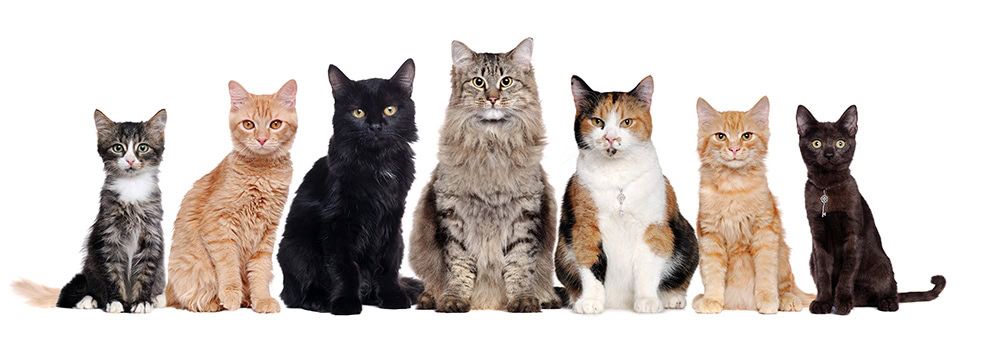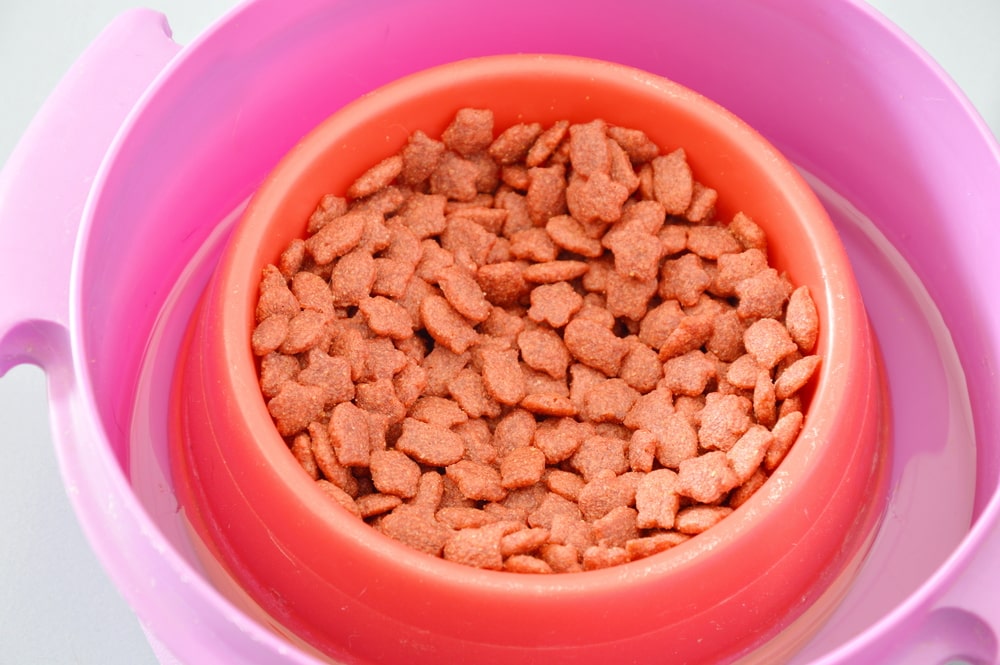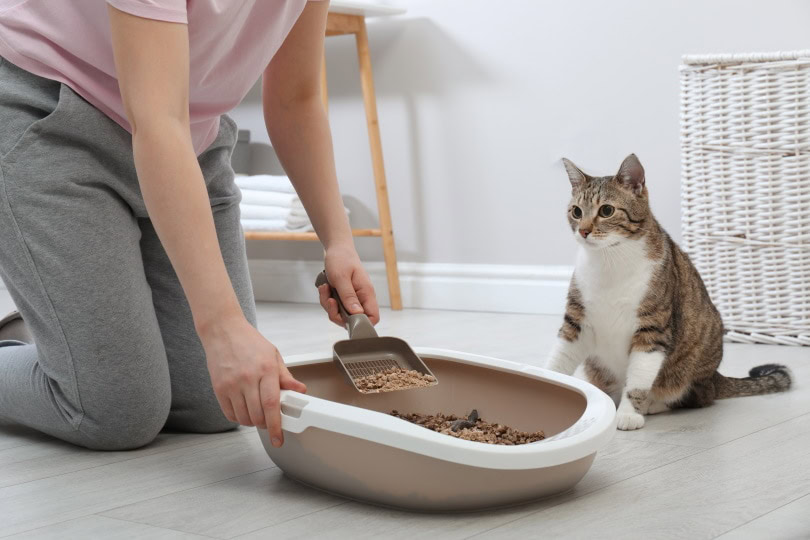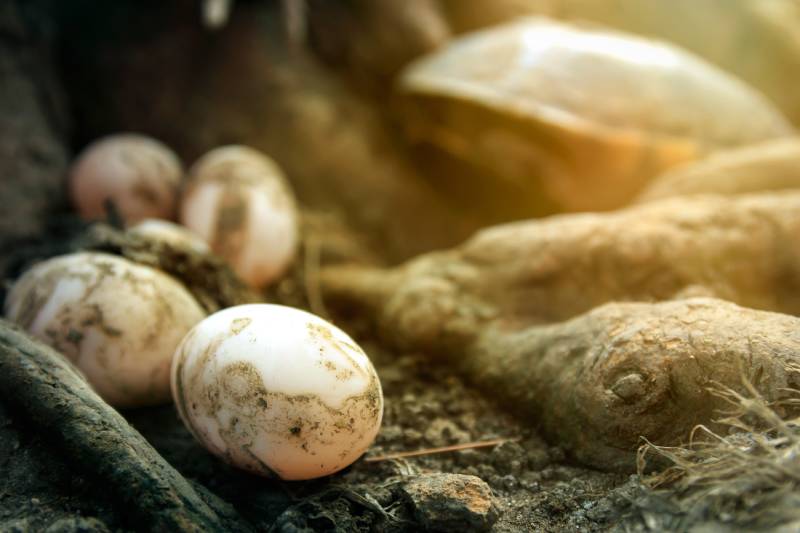VET APPROVED

The information is current and up-to-date in accordance with the latest veterinarian research.
Learn more »Click to Skip Ahead
Cats come in an incredible range of coat types, colors, and patterns, including solid, tabby, tortoiseshell, calico, and colorpoint. While these are the most common types of cat coat variations, there are actually many others that are more unique.
In this article, we’ll take a look at the most popular cat colors and patterns, and even give you a bonus of different coat textures as well.

The 20 Most Popular Cat Colors and Patterns
1. Solid Black
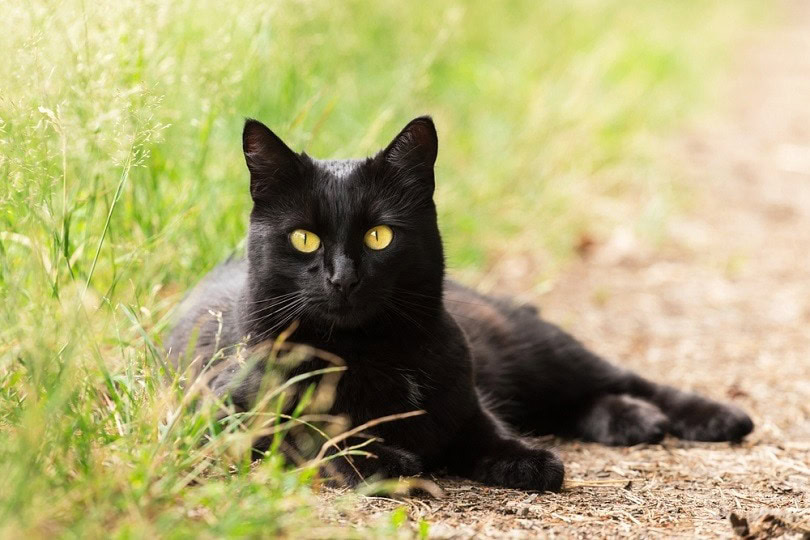
Black is one of the most common cat colors. A solid black coat gives cats a sleek, sophisticated look that many find appealing. However, black cats are also the least likely to be adopted because many people see them as superstitious or unlucky.
Of course, this is untrue. Black cats are just as wonderful as any other color.
2. Solid White
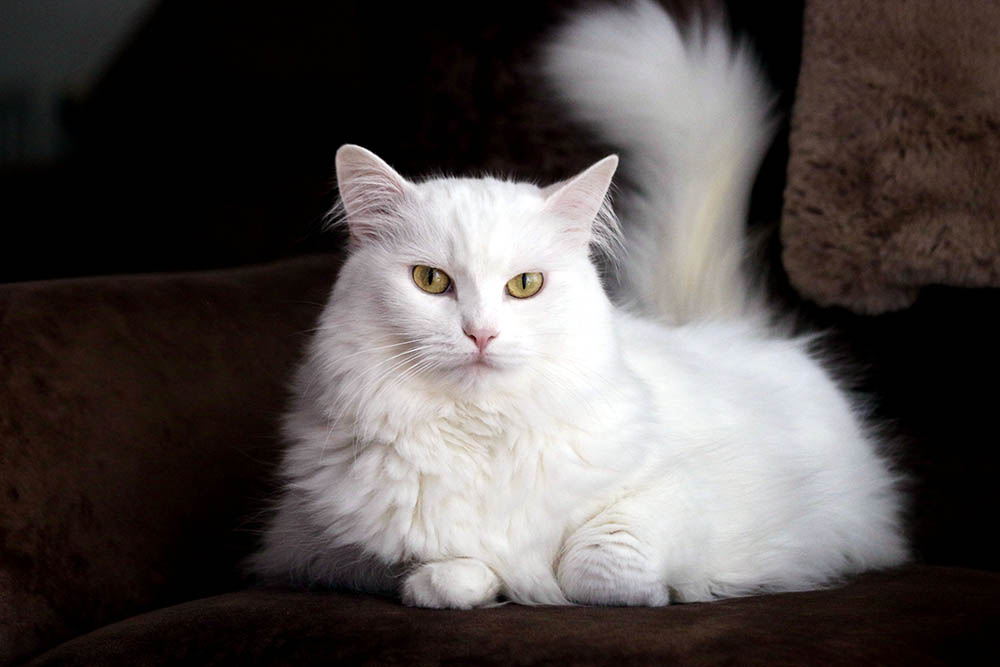
The opposite to solid black cats, these cats have a bright and eye-catching white coat that stands out in a crowd. Solid white cats often have green or blue eyes because the genes are closely linked. It’s also worth noting that up to 80% of white cats with blue eyes are deaf in at least one ear, while only up to 22% of white cats with non-blue eyes are born deaf.1
The deafness gene is closely linked to eye and coat color as well.
3. Tabby
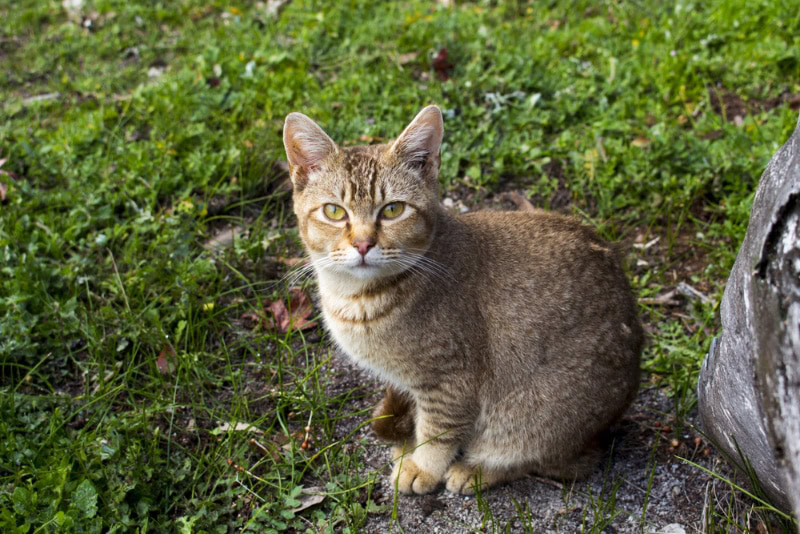
The tabby pattern is probably the most recognizable of all cat coats and can be found in both short-haired and long-haired varieties. This type of coloration usually features stripes or swirls of different shades on the body, legs, and face.
The primary tabby patterns are orange tabby and gray tabby, but there are sub-patterns as well depending on the exact location and pattern of the stripes.
4. Tortoiseshell
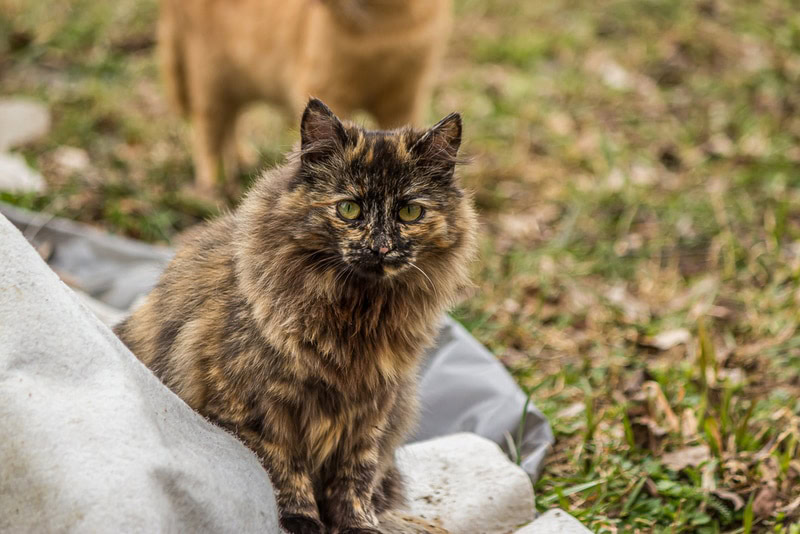
Tortoiseshell cats have a distinctive coat pattern with a mix of black and orange, or their diluted forms, blue and cream. Unlike calico cats, which have large white patches, tortoiseshells typically have little to no white in their fur. Their coat pattern appears as a mix of interwoven colors or distinct patches, sometimes with flecking throughout. They can be classified by The International Cat Association (TICA) into 4 different categories: traditional, sepia, mink, or pointed.
Most tortoiseshell cats are female because of the gene that gives the cat this coloration, requiring two copies of the X chromosome.
5. Calico
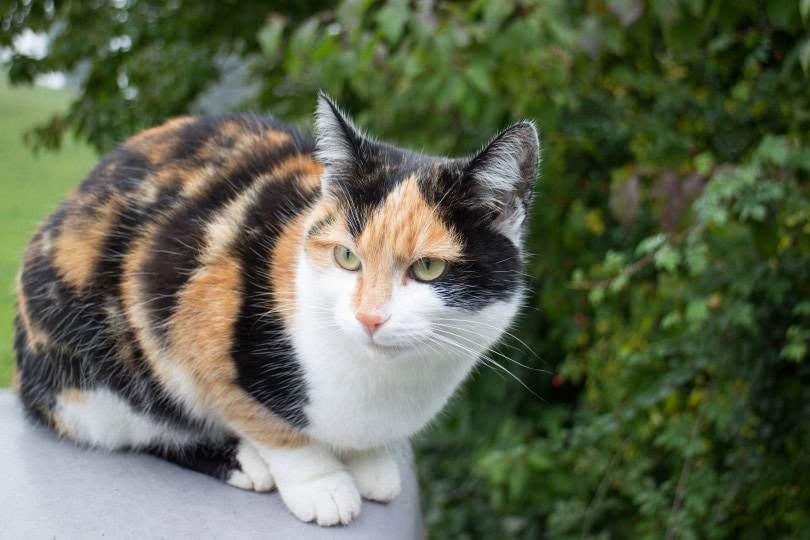
A calico cat is similar to a tortoiseshell in that three colors make up the pattern. The most common combination is black, orange, and white. But instead of the white and orange displaying on a largely black background, the black and orange display on a largely white background, and the colors are displayed in blotches instead of patches or flecking.
Calicos can also be dilute, and most calico cats are female as well.
6. Reverse Calico
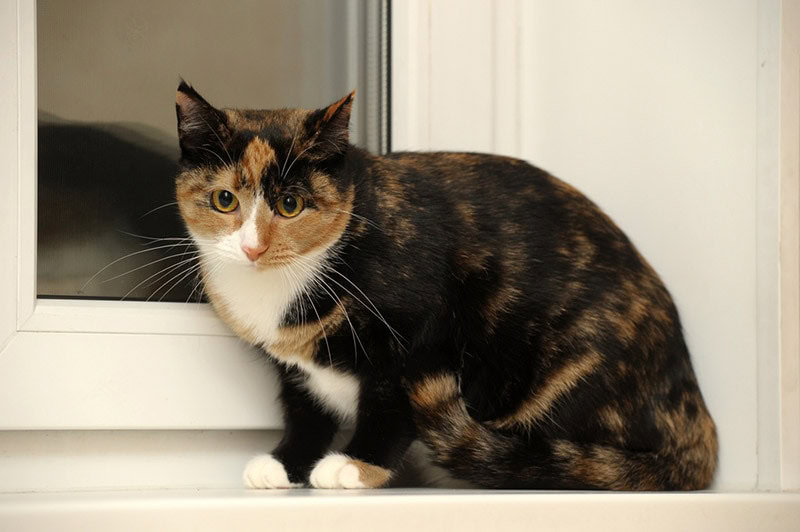
A reverse calico cat has the same coloring as a regular calico, but their dark patches are replaced with light colors while the lighter patches are replaced with dark colors. Common color combinations include black-and-white, gray-and-orange, or cream-and-black.
7. Blue
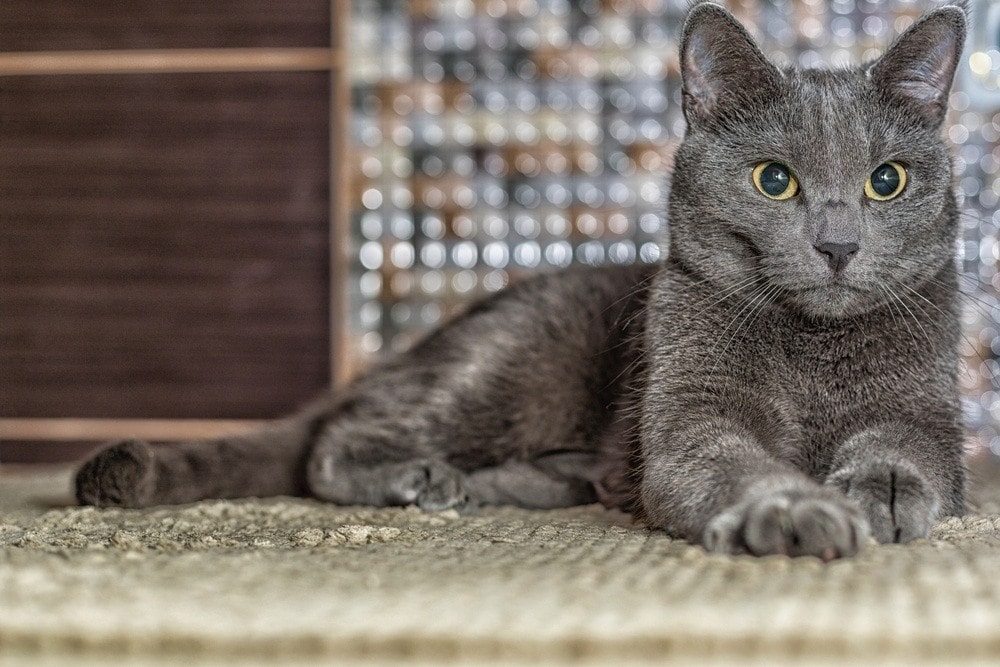
Blue cats have a slate gray or blue-gray coat coloration that gives them an icy look. The eyes are typically blue, green, or copper. Common breeds with a blue coloring include the Russian Blue, British Shorthair, and Chartreux, among others.
8. Red
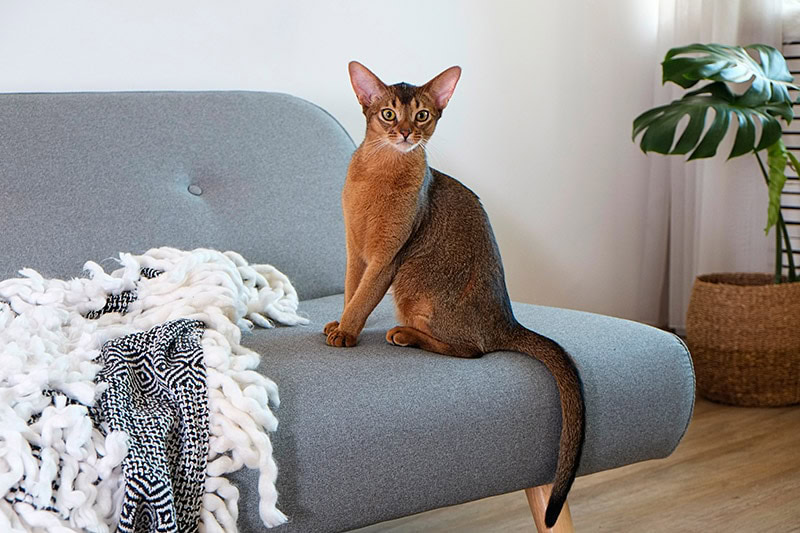
Red can range from light orange to a deep red-brown. The red coloration is quite rare among domestic cats. because it is a recessive trait, and both of a cat’s patterns would have to carry the red gene in order for it to be expressed in the kittens.
However, most “red” or orange cats that you’ll see will display the tabby pattern rather than being solid red.
9. Smoked
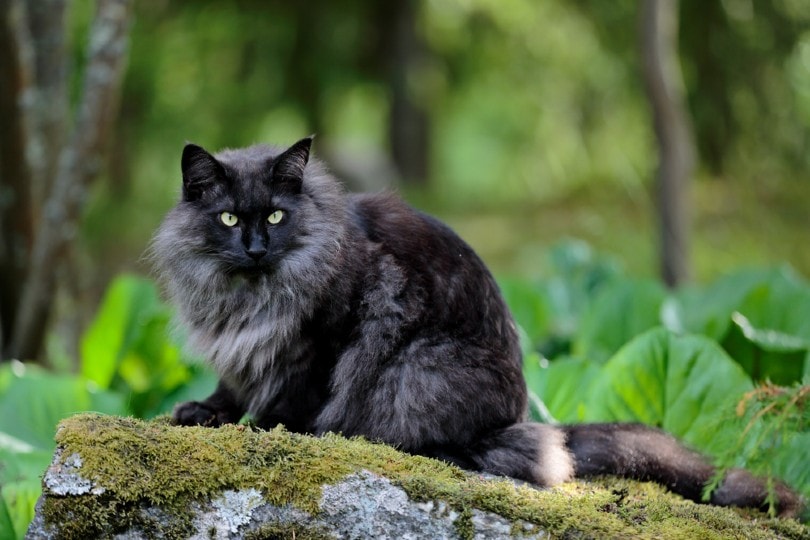
A smoked cat has a coat that is white at the roots, but gray, silver, or black toward the tips of their fur. This coloration is common in long-hair cats, such as the Maine Coon or Norwegian Forest Cat.
10. Bi-Color
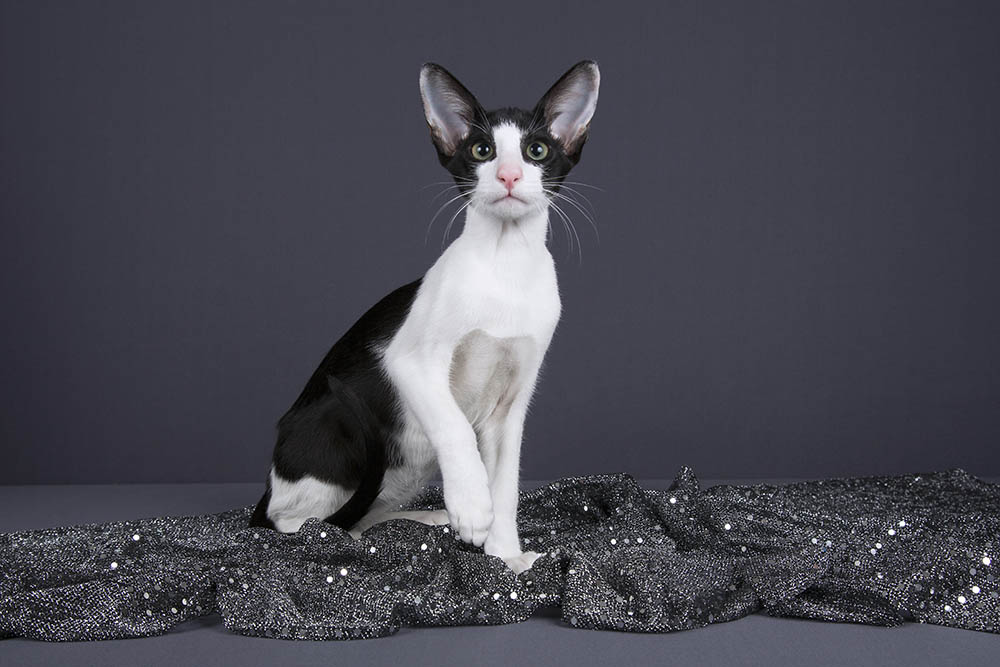
These cats are composed of two different colors, such as black and white or red and white. The face, chest, and belly are usually one color while the rest of the body is another color.
Tuxedo cats are a good representation of this color combination, but bi-color cats can be found in a wide variety of other colors as well.
11. Shaded Silver
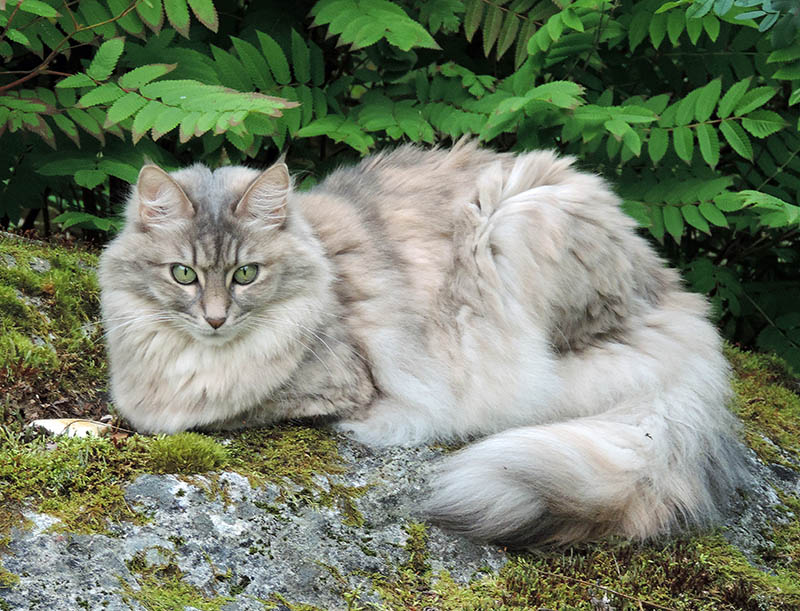
This type of cat has a silvery-white coat with darker shading on its head and tail. It’s common in Persians and other fluffy breeds. The shaded pattern can also be seen in other colors such as red or blue.
12. Pointed
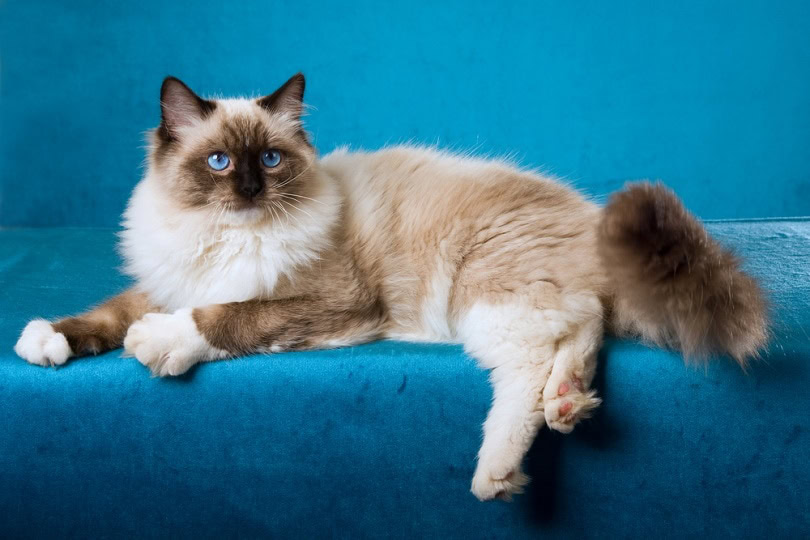
Pointed cats feature lighter-colored bodies with darker points on their ears, face, tail, and paws. This pattern is commonly seen in Siamese and Himalayan cats.
One example is Chocolate Point. Chocolate point cats have lighter bodies and chocolate points on their face, ears, and tail. Other “points” are lilac points and seal points.
13. Marbled
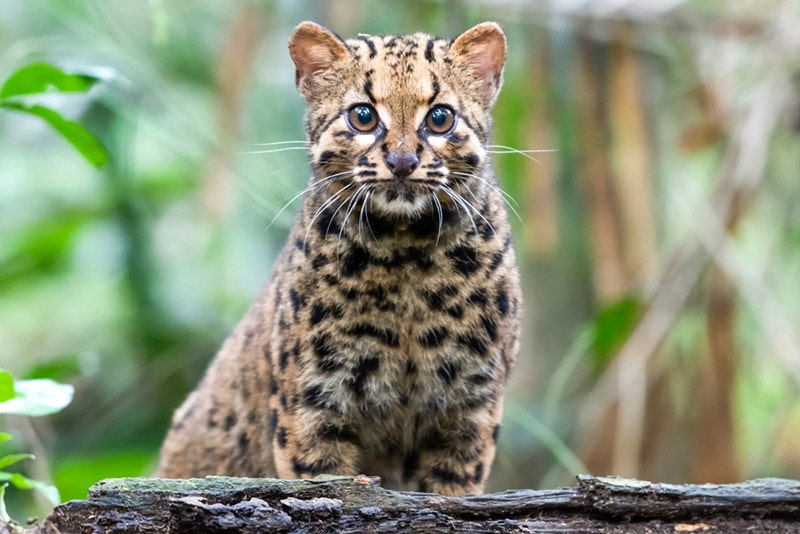
Marbled cats feature swirls or blotches of two or more colors in their coat patterning, making them look almost like a marble. This type of cat is quite rare and usually only seen in wild cats of Asian descent.
14. “Cow”
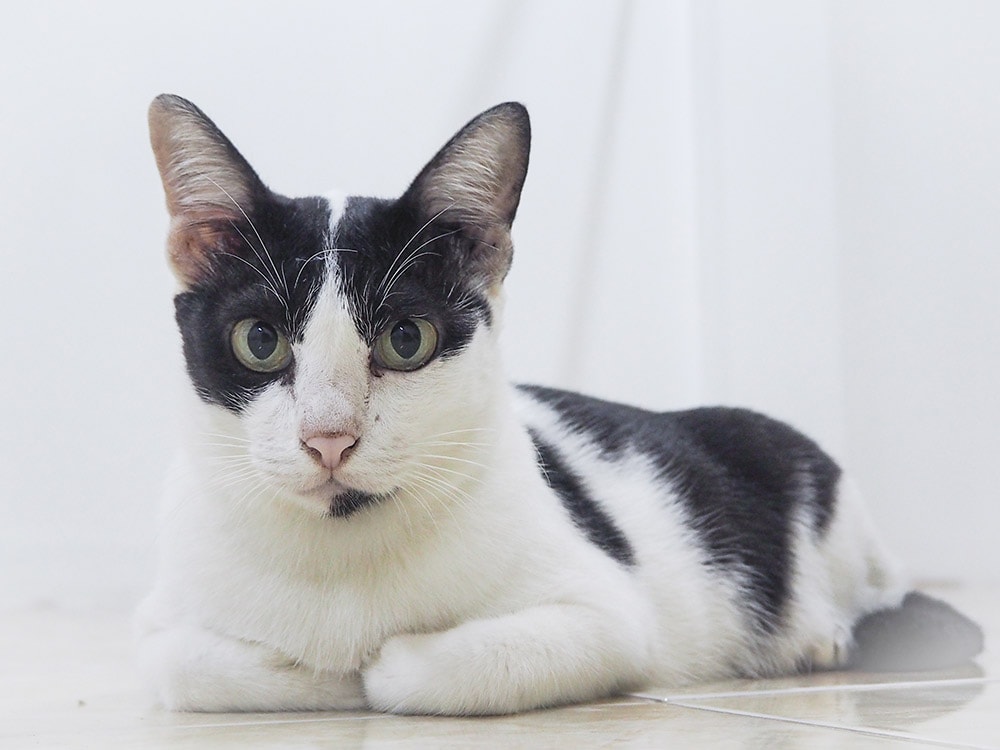
“Cow cats” is an informal term for bicolor black and white cats with black blotches on a white coat. This pattern can be found in both short and long-haired varieties, but it is typically classified under the bi-color coat pattern rather than being a distinct, officially recognized pattern.
15. Tuxedo
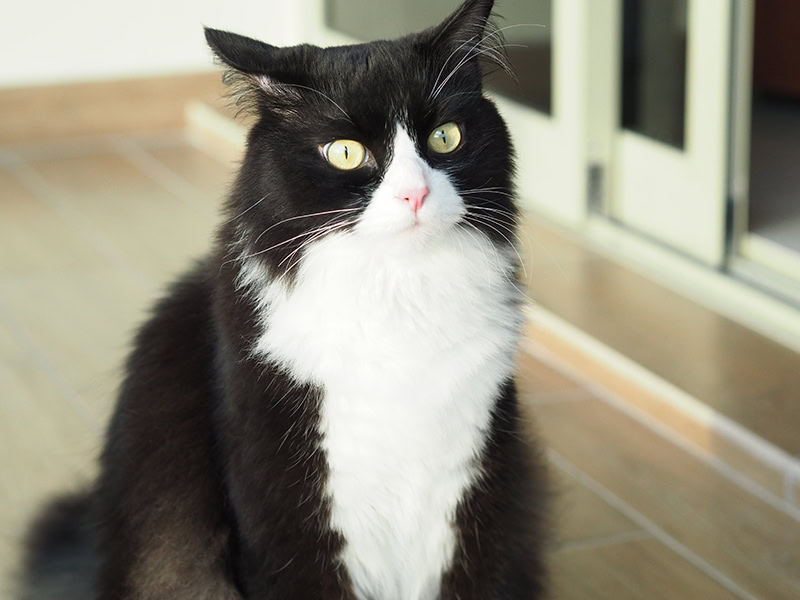
Tuxedo cats have a specific type of bicoloration. They have black fur on their bodies with white patches on their faces, chests, and paws. They also have white whiskers, giving them the appearance of wearing a tuxedo.
16. Cinnamon
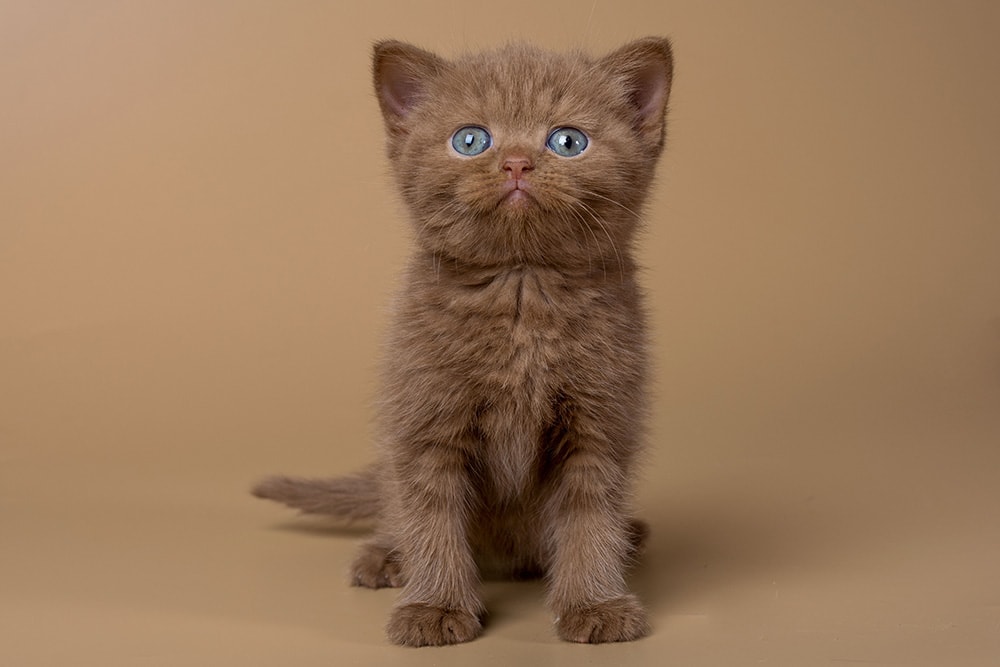
Cinnamon cats are similar to orange cats, but they have a warmer brown coloration. Cinnamon cats are a variant of black cats that produce brownish pigment. Chocolate is darker and cinnamon is lighter. This color can be seen in the Abyssinian breed.
17. Lynx Point
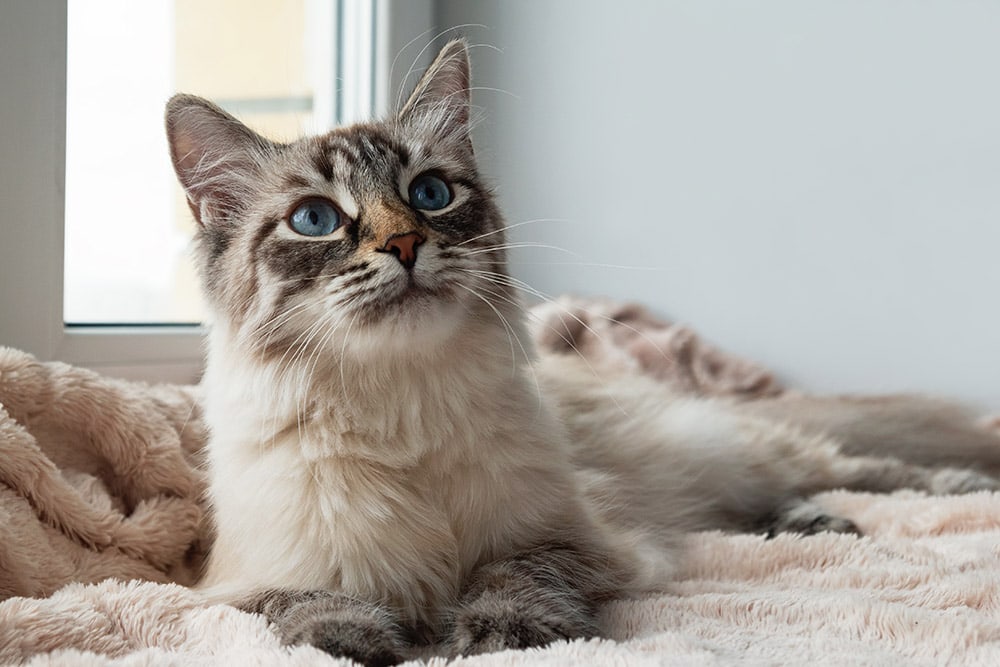
Lynx point or lilac tabby point cats have a light-colored body with darker points on the face, ears, and tail. The points are usually stripes of gray or brown in color, giving these cats a unique look that can make them look similar to the wild Lynx.
18. Cameo tabby
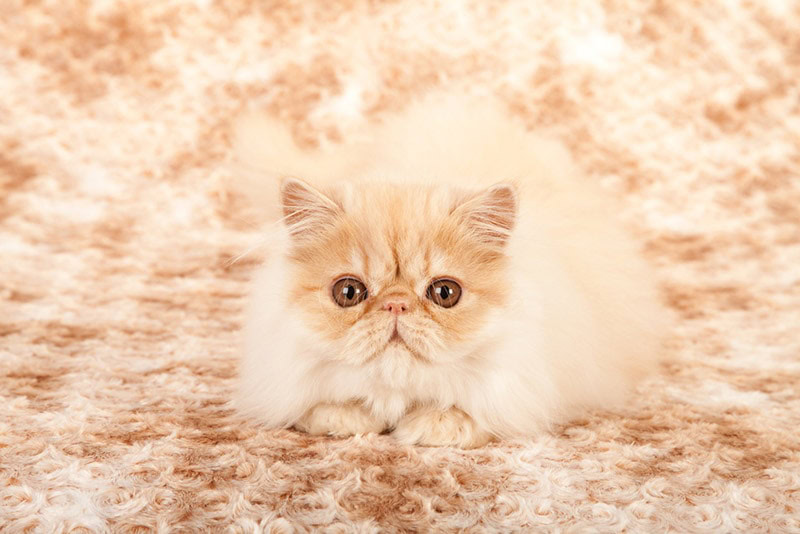
The cameo tabby or cream ticked tabby pattern is relatively new and features a diluted orange coloration, making the cats look almost pink. The body, face, ears, and tail may have a slightly darker color to them.
19. Fawn & Lilac
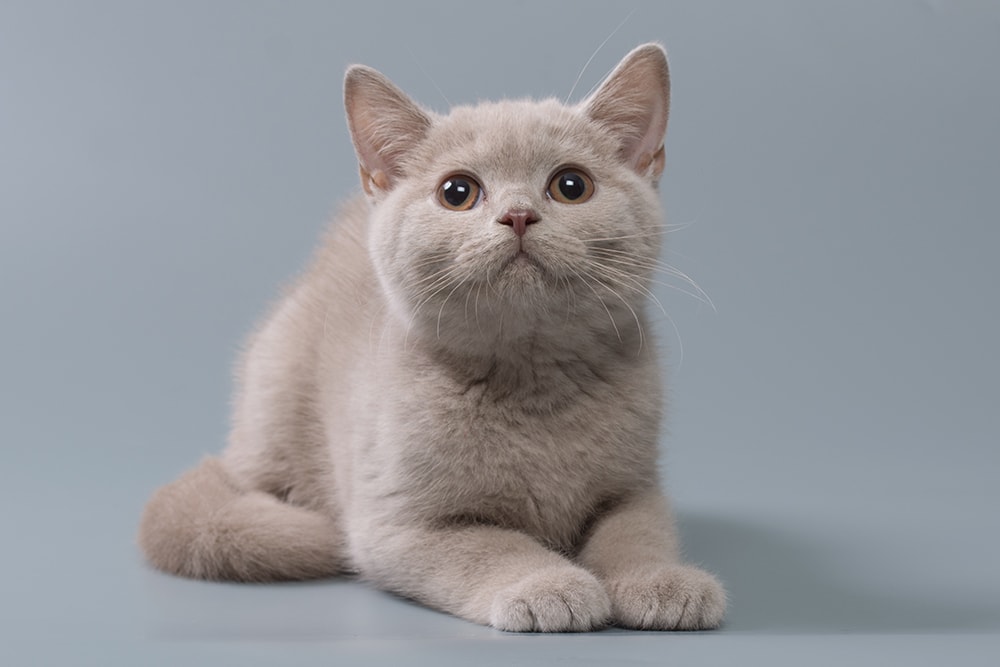
A fawn cat usually has a light sandy-brown coloring that resembles the fur of deer or antelope. This color is a dilution of the cinnamon or light brown coat. Lilac cats, on the other hand, are more of a diluted chocolate brown coloration and can make a cat look light purple in certain lights.
These are both rare colorations and are generally only seen in purebred cats that are bred to display these colors.
20. Chinchilla
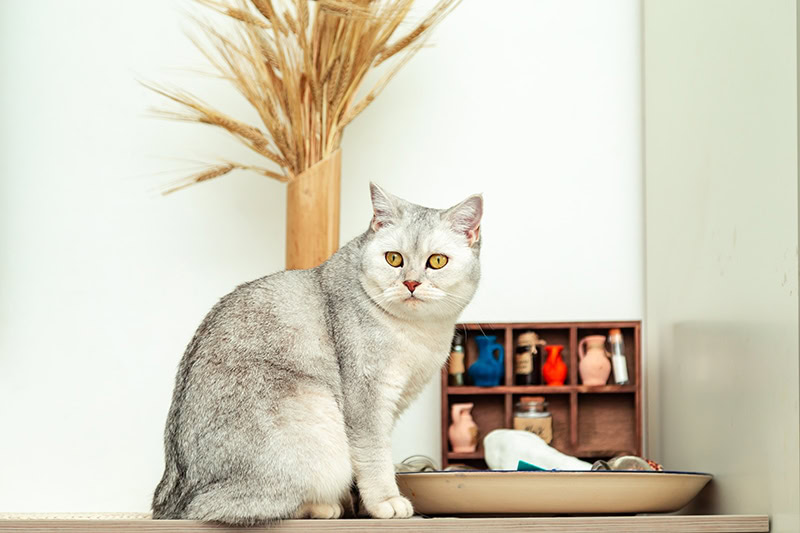
Chinchilla cats have a very light grayish-white base coat with black tipped fur, particularly around their face, ears, and tails. This tipped coat pattern is most commonly seen in long-haired breeds such as Persian or Himalayan cats.

An Explanation of the Different Coat Types and Textures
- Hairless – Hairless cats are cats with little to no fur due to a naturally occurring mutation that causes baldness. The most common hairless breeds are Sphynx and Peterbald.
- Short hair – This coat type is characterized by very short, close-lying fur that lies flat against the body. It is commonly found in breeds such as the British Shorthair, Burmese, and American Shorthair.
- Semi-Long Hair – Semi-long-haired cats have medium-length fur with a soft texture that stands slightly away from the body. This coat type is found in breeds such as the Ragdoll, Maine Coon, and Turkish Van.
- Long Hair – Long-haired cats have extremely long fur that can range from silky to cottony in texture. Examples include Persian, Himalayan, and Norwegian Forest Cats.
- Curly – Curly coats have tightly curled fur that can range from short to long in length. Examples include Cornish Rex and Selkirk Rex cats.
- Wirehaired – Wirehaired cats have short, rough fur due to an altered gene that causes their guard hairs to be stiff and brittle. This type of coat is found in breeds such as the Scottish Fold or American Wirehair.
- Double Coated – Double-coated cats have both an undercoat and an overcoat made up of different types of fur. This type of coat is often seen in cats of Persian or Himalayan descent.

Conclusion
When it comes to cats and their fur, there are many different coat colors, patterns, fur types, and textures to choose from. From smooth Shorthairs and longhaired Persians to curly Rexes and downy Burmillas, the possibilities are almost endless.
No matter what type of cat you have, make sure to brush your coat regularly in order to keep it healthy and looking its best.
Featured Image Credit: Kasefoto, Shutterstock
